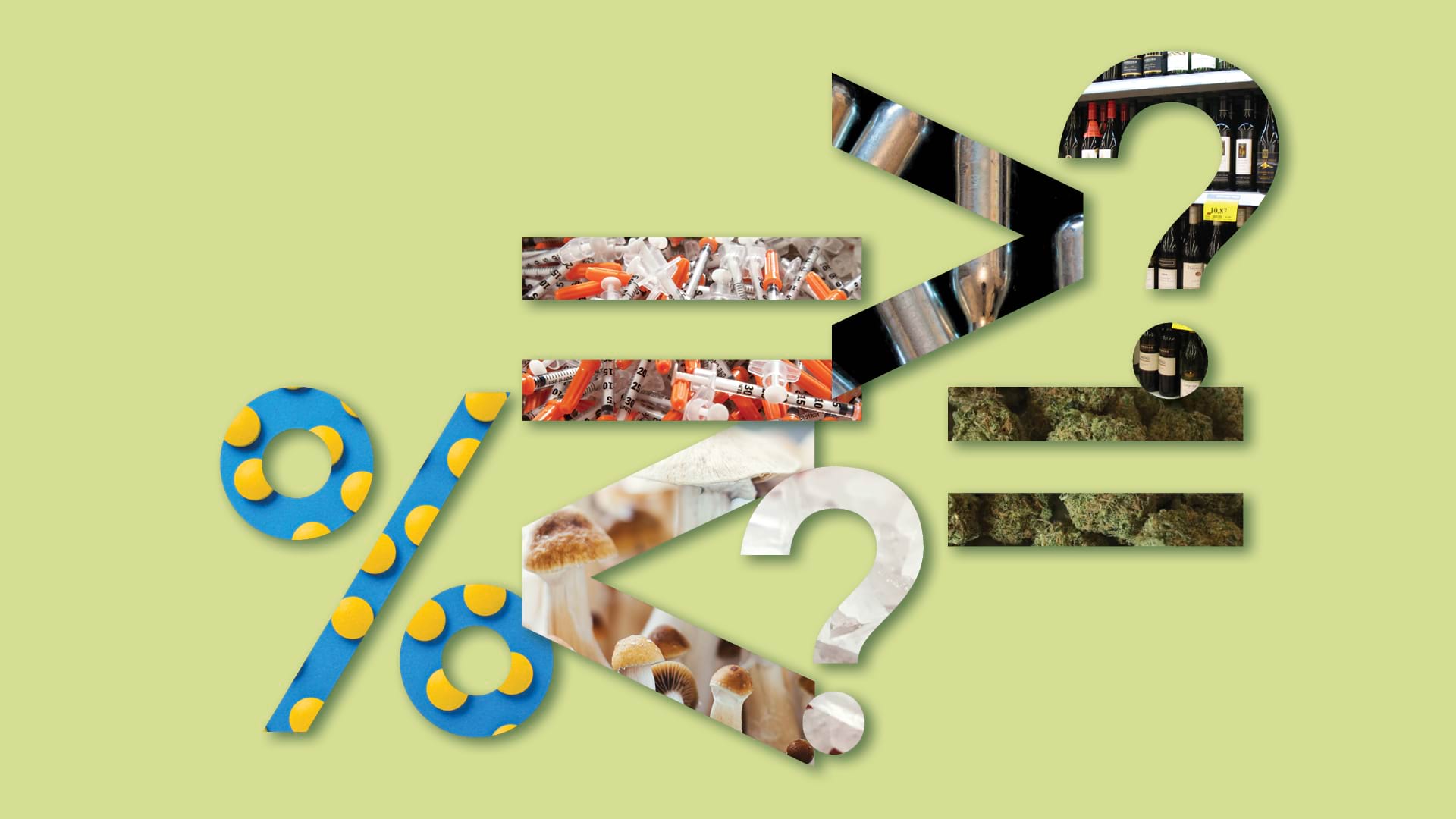
Last year, researchers at Otago University’s Ōtautahi Christchurch campus completed a study of the risks and harm associated with 23 commonly used drugs in Aotearoa. Instead of only looking at a drug’s impact on individual people, the study takes a big picture view and ranks drugs according to the harm they could cause to communities and society as a whole.
That said, the study shouldn’t be taken as a guide on risk you to as an individual. There are many things that can increase or decrease your own personal risk when taking drugs – for example, the risk of overdose can vary based on your size, weight, tolerance, what else you’ve taken, how much you’ve eaten recently and more.
If you want info to help you understand the risk of different drugs for you as an individual, head to our Drug Info pages.
We’ll dive into what the study found, but first: what do these researchers actually mean by ‘drug harm’?
How do you define ‘drug harm’?
In the NZ Drug Harm Ranking Study, a panel of experts ranked drugs according to 17 different types of harm – including their effects on your body and brain, how likely they are to cause dependence, how drugs relate to crime, how drugs can impact family and friends, the impact on whole communities and even things like environment damage.
These criteria are based on similar studies conducted overseas, but also includes two new criteria developed to better incorporate a Māori worldview: spiritual and intergenerational harm.
Drug Foundation executive director Sarah Helm says it’s important that people understand that the study takes a broad and long-term view of harm – not just a ranking of how toxic or addictive each drug is.
Takeaways from the study
Results from the study indicate that alcohol, methamphetamine, and synthetic cannabinoids may pose the most harm to the community overall. Alcohol was rated as the most harmful drug, both for those who use it, and to others, while nitrous oxide was rated as the least harmful substance out of the 23 drugs in the study.

It’s all about context: different people may experience different risks and harms, and these can also be influenced by each country’s unique circumstances.
The study’s authors commented that while the experts looking at each drug knew that fentanyl (a potent opioid) can be deadly, there isn’t much info available on how it impacts Aotearoa specifically, because we haven’t seen widespread use here. That said, since the study was developed, we’re seeing more potent opioids like fentanyl and nitazene coming through the drug market – so we need to be prepared. Here’s what you need to know to stay safer with fentanyl and nitazenes.
In addition to assessing the harms caused by each drug to the general population, the study also looked specifically at drug harm experienced by youth (ages 12-17). For this group, drugs including solvents and non-prescription opioids were ranked as causing more harm than for the general population. For example, cannabis which is rated #9 in harm for the overall population, was ranked as the #6 most harmful substance for youth.
Top tips to reduce drug harm:
-
Get your drugs checked so you know what’s in them! Drug checking is free, legal and confidential – use our calendar to find drug checking near you.
-
Sign up for alerts from High Alert, New Zealand’s early warning system for dangerous drugs.
-
Think about how you’re taking your drugs, as different methods of taking drugs (like swallowing or injecting) can have different risks.
Related stories
Recent stories
Taking benzos? Help shape NZ research
We talk to master's student Caitlin Toohey, who is researching benzodiazepine use in New Zealand.
Ketamine bladder is not pissing around
A paper in the New Zealand Medical Journal has highlighted concerns about increasing ketamine use leading to more diagnoses of ‘ketamine bladder’. But what actually is ketamine bladder?
The study on Asian New Zealanders' use of drugs
Winner Tian, General Manager of Asian Family Services, talks to us about a new study that has found that Asian New Zealanders use alcohol and other drugs at higher rates than previously thought.